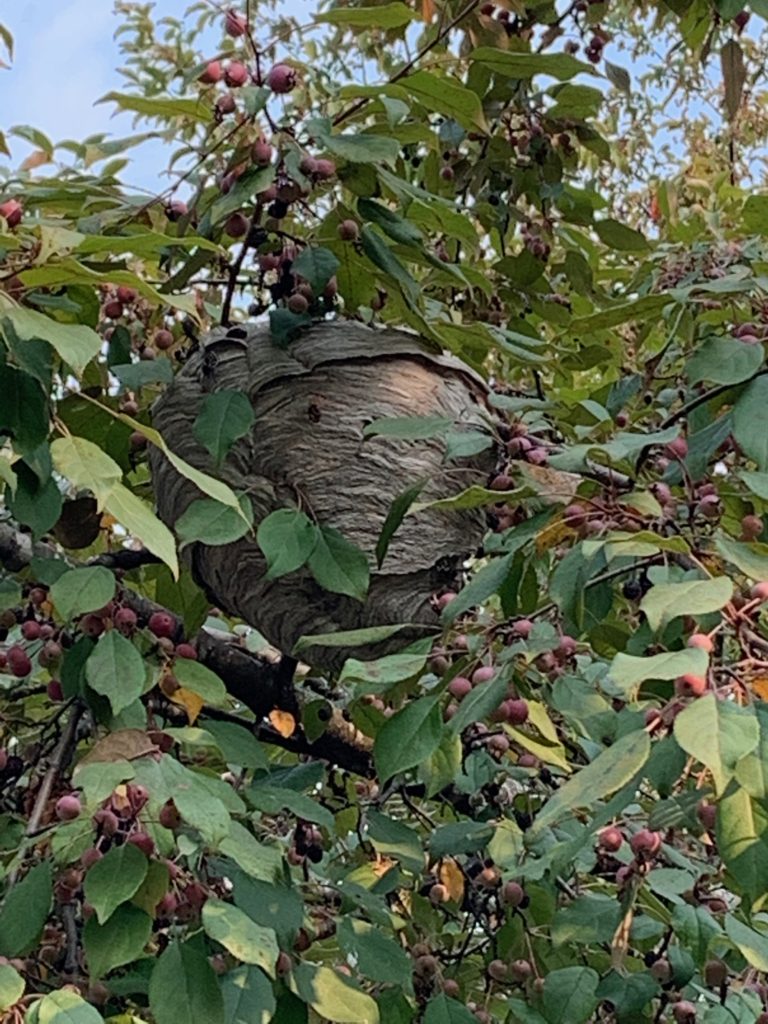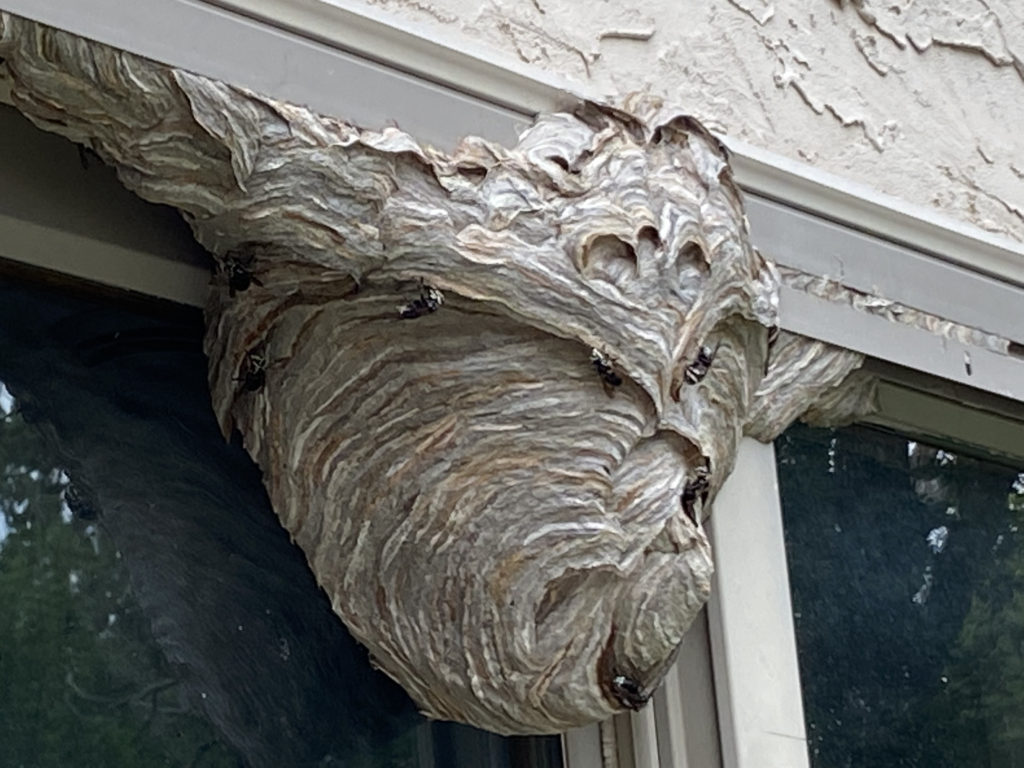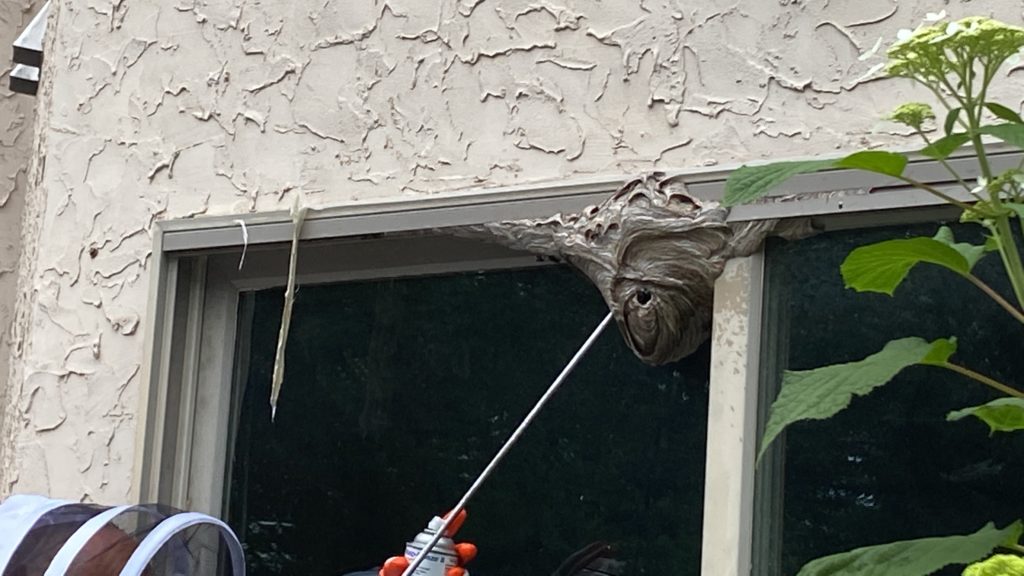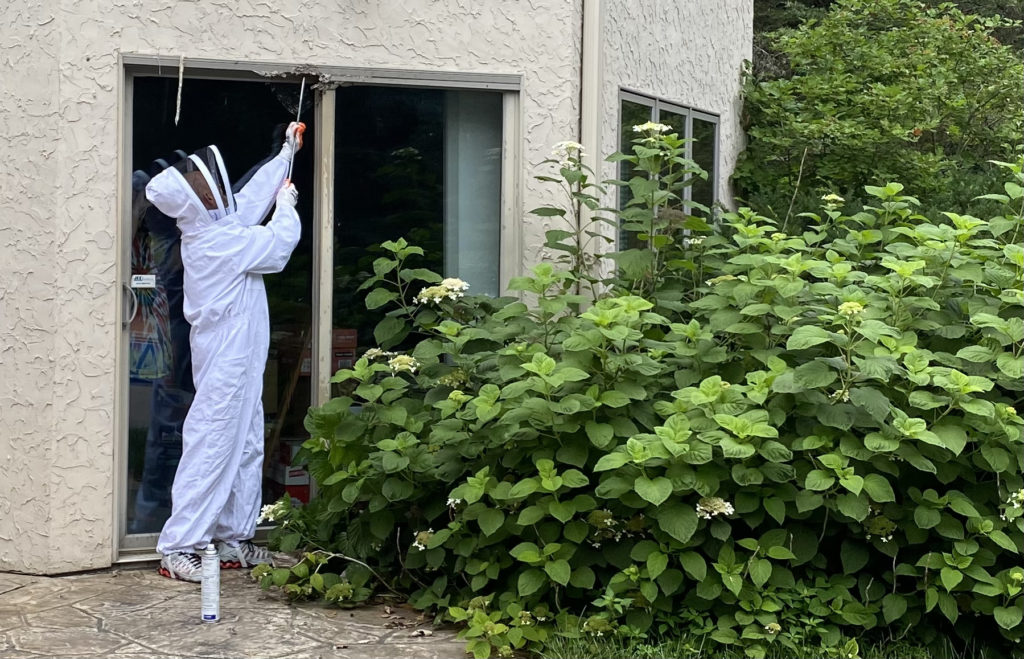I recently got the opportunity to do some vehicle shuffling with our top technician trainer in Minnesota. During the ride, he mentioned he would be training a pair of newer team members on proper wasp nest removal techniques. While this happens multiple times a day in the life of a technician, I was excited to learn they were tackling a bald faced hornets nest. Let’s explore the 5 steps to getting rid of a wasp nest.

Bald Faced Hornets
Bald faced hornets are large wasps that build a nest quickly. Additionally, they build up a large population quite rapidly. They typically build their nests into landscaping, but this one was going to be on the home just above a bush. I rearranged my schedule to join in the fun.

The Steps to Getting Rid of a Wasp Nest

- Find the nest before you get stung – sometimes this is easier said than done. Our customers appreciate that we are regularly inspecting for them so they don’t have to.
- Use the proper apparel – I personally don’t mind tackling a wasp nest removal in a speedo, but protective equipment allows for less adrenaline and more precision in the equation (not to mention less pain).
- Apply product to the natural opening – keep in mind that some nests, especially ground nests, may have multiple entrances.
- Puncture the nest to apply product to other areas – even if you are a master dust applicator, the tiers of combs can block a large portion of the nest from being affected
- Knock down the nest, remove the remnants, and leave the site as pretty as possible. This may take a couple of passes and allowance of time for the wasps to die or evacuate the area.
Alternative Methods for Getting Rid of a Wasp Nest
- I have always enjoyed sneaking up and removing the nest without applying any products. This usually gives a huge rush and plenty of entertainment from customers who like to watch an odd show.
- Waiting for winter. I like to observe wasps and study their behavior. Whenever we get them at our house, I try and convince the kids to let it be until winter. This argument usually loses steam really quickly. They eventually convince me we have to take into account the loss of playing territory and the risk of stings.

The ONE Step Process to Getting Rid of Wasp Nests
- Have Rove Pest Control take care of it. Seriously, I used to enjoy working on my own vehicles. Now I realize that my time is better spent playing with my kids and playing with bugs when they get bored of me. Spend your time doing you and let us take care of the pests!
About Rob Greer: Pest Control Expert and Industry Leader
Rob Greer, co-founder of Rove Pest Control, has a deep connection with nature, developed during his upbringing in rural Idaho where he raised horses and cattle. He began his career in pest control in 2001 to support his university studies. After earning a BS in Business Management, Rob, along with Lenny Gray and McKay Bodily, founded Rove Pest Control.
Rob has played a pivotal role in shaping the operational framework of Rove Pest Control, with a focus on personal development for team members, public health awareness, and tailoring services to meet the needs of individuals and communities.
As an Associate Certified Entomologist (ACE) and Subject Matter Expert (SME), Rob has made significant contributions to the pest control industry. He has collaborated on the Minnesota Department of Agriculture’s UMN Extension certification manual and exam development, the National Pesticide Applicator Certification Core Manual for the EPA, and the Quality Pro Customer Service Credential Task Force. His expertise has also been recognized in his testimony for the pest control industry before the Minnesota state legislature as a State Policy Affairs Representative. Currently, Rob serves as the President of the Minnesota Pest Management Association Board. Learn more about Rob Greer.


